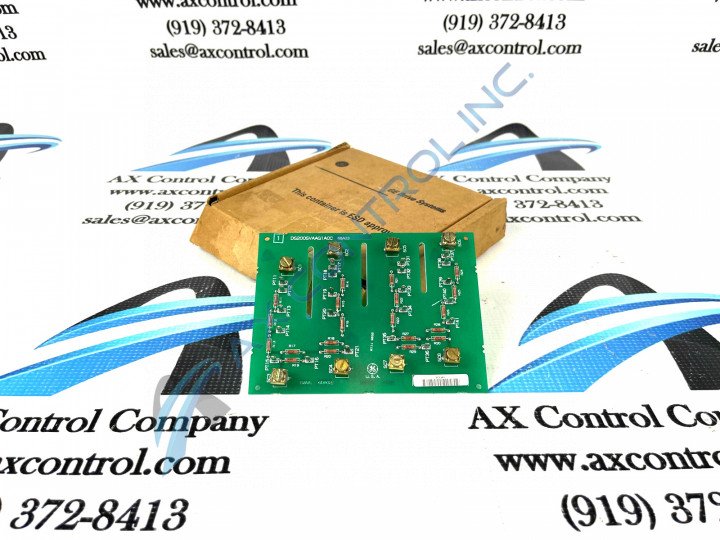About the DS200SVAAG1ACC
This DS200SVAAG1ACC printed circuit board product offering from General Electric was originally devised, designed, and produced to exist as a member of the Mark V Series of wind, gas, and steam turbine control systems and control system component products. The Mark V Series that this DS200SVAAG1ACC product offering belongs to, while considered a legacy series, is one of the more-recently developed General Electric product series featuring the patented Speedtronic technology first developed by General Electric for the Mark I Series in the late 1960's. The Mark V Turbine Control System Series that this DS200SVAAG1ACC PCB belongs to is considered a legacy series as its is no longer in active production by General Electric, replaced by newer product lines such as the Mark VI. This DS200SVAAG1ACC printed circuit board or PCB for short is actually better-definable as a Voltage Attenuator Board, the original functional product description it is assigned in relevant General Electric and Mark V Series instructional manual documentation. While this DS200SVAAG1ACC circuit board does possess this specific functionality in the Mark V, it is not the original Voltage Attenuator Board produced for the Mark V Series. The original Voltage Attenuator Board created for use in the Mark V Series automated drive assembly is the DS200SVAAG1 parent printed circuit board, missing all three of this DS200SVAAG1ACC PCB's significant product revisions.
Hardware Tips and Specifications
As with any General Electric Mark V Turbine Control System Series product, this DS200SVAAG1ACC PCB features its own set of hardware component inclusions and specifications that allow it to exists as a Voltage Attenuator Board. This is made obvious in part through the functional DS200SVAAG1ACC product number, which codes for many crucial DS200SVAAG1ACC PCB hardware specifications. Some of the relevant information revealed in this DS200SVAAG1ACC functional product number includes the DS200SVAAG1ACC PCB's normal Mark V Series assembly, domestic location of manufacture, SVAA functional product acronym, normal style of PCB coating, group one Mark V Series grouping, and its three-fold significant revision history. The GE Voltage Attenuator Board DS200SVAAG1ACC features multiple test points and eight terminals for attaching cables. The GE Voltage Attenuator Board DS200SVAAG1ACC is a turbine control board and is part of the Speedtronic series. The cables connected to the DS200SVAAG1ACC board are signal cables and when you install the replacement board, you must install the cables on the same terminals. To do that you must consider the following information. The terminals each have an identifier assigned to it. For example, the terminals are designated as SC1, SC2, and SC3, and so forth. You will find the designators printed adjacent to each terminal on the board. Before you disconnect the signal cables, tape or tag the terminal identifier on the cable.
General Electric points out to new DS200SVAAG1ACC board owners a series of crucial and safe installation procedures formulated for this DS200SVAAG1ACC product specifically. Wear a wrist strap for protection against static build up at all times. The first step in the DS200SVAAG1ACC PCB installation process is to loosen the screws that hold the board in place and keep the screws and washers together because you’ll use the same hardware to install the new board. To keep from scratching or jabbing the other boards, have a good view of the interior of the cabinet while you work. Remove the cables and move them aside and out of the way. Grasp the board by the sides and without scraping against other boards gently remove it from the drive. The next step would be to align the replacement DS200SVAAG1ACC board with the screw holes and insert the screws. Don’t over tighten the screws because too much pressure might crack the board. Align the cables with the proper terminal and secure it to the board. All of the factory-drilled screw holes in the assembly of this DS200SVAAG1ACC Voltage Attenuator Board should be well-insulated to protected against potentially-present damaging static electricity.













